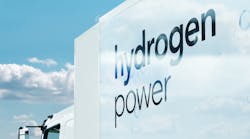I am beginning to wonder if it was a mistake to use the term “messy middle” to describe the transition time between internal combustion engines and electric ones in the trucking industry.
From what I am hearing, too many people are misinterpreting the term or using it as a reason to justify inaction. To be very clear, NACFE does not think the messy middle has negative connotations. How many of us have a messy room in our house or a messy car? Heck, life itself is messy.
All we meant by the messy middle is that it is a time when there are host of solutions available for decarbonizing transportation. Having a lot of choices can seem messy. There is a lot of information to sort through. It takes time to separate the hype from the truth and to fully understand the pros and cons of each option.
See also: Truck dealerships must prepare for electric adoption
It is messy because there is not one solution that is right for every fleet or even for every duty cycle within a fleet. It is messy having to have a multi-pronged approach. It is far cleaner to choose one power source and stick with it. But it is not more efficient to do that. Nor is it responsible to just opt out of the whole process of reducing the trucking industry’s carbon footprint.
While NACFE believes that battery-electric power, sometimes using hydrogen as a range extender, is the long-term solution for the industry, we also know that today battery-electric vehicles won’t work in all applications. The good news is that there are many other solutions that will work today. For some, compressed natural gas— and taking advantage of renewable natural gas where possible—will be the right choice for today. For others, renewable diesel will make sense. For some, hydrogen fuel cells will work. For some, diesel will remain the best option. And for others, BEVs will be the solution that is right. For many fleets the answer to the question “which power source is right for me” will be “all of the above.”
There are a lot of bright minds working on great options to help trucking meet its environmental responsibility. No one knows for sure what the future will look like, but I know one thing: Savvy fleets can’t wait until the future gets here to decide what they are going to do. In some cases, it will take two or even three moves to get to the later zero-emission path.
I think if fleets keep in mind that there is no one right answer to the issue of decarbonization, they will be more willing to jump into the middle—even if it is messy. And remember NACFE is here to help you navigate the mess.
Michael Roeth has worked in the commercial vehicle industry for nearly 30 years, most recently as executive director of the North American Council for Freight Efficiency (NACFE). He serves on the second National Academy of Sciences Committee on Technologies and Approaches for Reducing the Fuel Consumption of Medium and Heavy-Duty Vehicles and has held various positions in engineering, quality, sales, and plant management with Navistar and Behr/Cummins.




